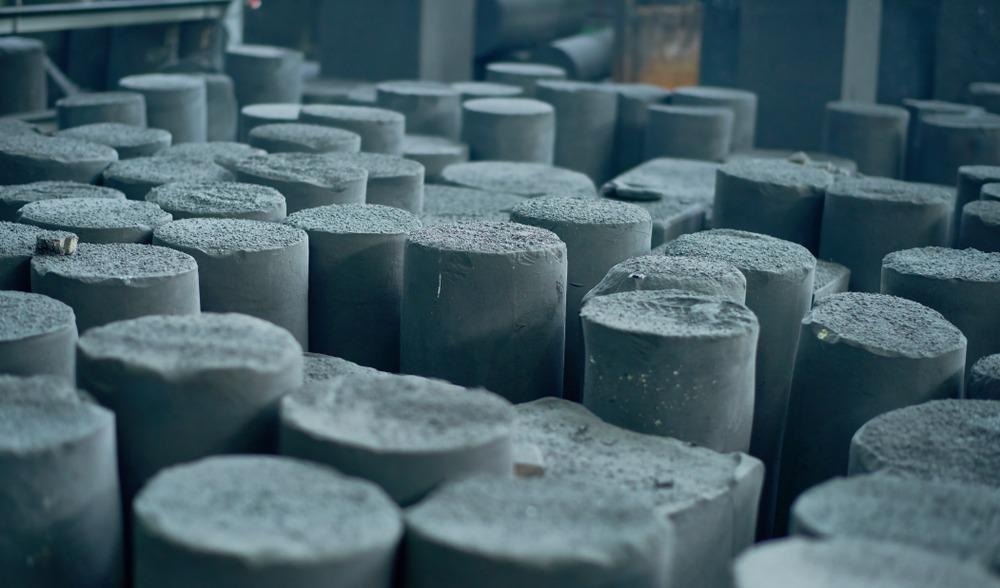The development and widespread adoption of hydrogen power is viewed as central to achieving global goals of climate neutrality. As a renewable energy source, hydrogen offers a means of replacing fossil fuels with a clean energy source that is scalable and cost-effective.

NeoGraf develops graphite bipolar plates for use in heavy-duty fuel cells. Image Credit: SeventyFour/Shutterstock.com
In each of the European Commission’s eight net-zero emissions scenarios for 2050, renewable hydrogen features as a key solution. Theoretically, renewable hydrogen can store surplus power generated by other renewable sources, meaning that no energy is wasted and energy can be provided in times when renewables cannot produce power. It can also help to decarbonize hard-to-electrify industries such as long-distance transport. Finally, next-generation clean hydrogen technologies can replace fossil fuels as a zero-carbon source in chemicals and fuel production for transportation.
Here, we discuss recent developments in graphite bipolar plates for next-generation clean hydrogen technologies.
What are Fuel Cells and How are They Used in Mass Transportation?
Fuel cells are frequently used in mass transportation/buses in China, as well as in vehicles and forklifts in other regions, mostly in North America. While many industries can directly use electric power to help them switch from fossil fuels to renewables, industries such as mass transportation, including aviation, heavy-duty transport, and shipping, cannot. Fuel cells, however, offer an indirect way to provide clean energy.
There is an urgent need to develop clean energy solutions for the transportation industry, with decarbonization rates of this sector falling significantly behind where they need to be to meet climate change goals. For example, in the UK, emissions from transportation have increased with the share of renewable energy in the sector falling from 10% to 4.2%.
Fuel cells are a form of zero-carbon energy that can be easily stored and transported; they are particularly useful for helping the transportation sector switch to clean energy and are an important option for decarbonizing the industry, along with the use of fully electric vehicles and biofuels.
How are Graphite Bipolar Plates Used in Fuel Cells and What are their Advantages?
Leading developer and producer of natural and synthetic graphite sheets, rolls, and powers, NeoGraf Solutions, recently received funds of $2 million from the US Department of Energy (DOE) to support the development of graphite bipolar plates for use in heavy-duty fuel cell applications.
NeoGraf’s project will help develop low-cost, flexible graphite bipolar plates that are suitable for use in mass transportation vehicles such as buses and trucks. The cells provide clean energy for the transportation sector, are cost-effective, and help support the widespread adoption of such technology.
NeoGraf’s Solution Will Make Way for Next-Gen Fuel Cell Materials
NeoGraf’s goal is to develop low-cost graphite bipolar plates for next-generation clean hydrogen technologies to help mass transportation reduce its emissions.

Image Credit: Avigator Fortuner/Shutterstock.com
The success of the three-year project will depend on whether NeoGraf can develop low-weight, flexible, and thin graphite with a very low content of leak-inducing impurities.
If successful, the project will likely act as a cornerstone for the development of next-gen fuel cell materials and will help to advance next-generation clean hydrogen technologies for mass transportation.
The Future of Fuel Cell Materials
Research into the development of fuel cell materials is generating new lines of inquiry that could boost the efficacy of fuel cells and support their widespread adoption in mass transportation. Recently, data has suggested that oxygen-reduction electrocatalysts could be used to replace the platinum/carbon (Pt/C) that is commonly used in proton exchange membrane fuel cells.
Other new data has shown that semiconductors can be used in fuel cells as electrolytes due to their high ion conductivity and good electrochemical characteristics. Future studies with double perovskite-like oxides will likely develop our knowledge of the potential use of semiconductors in next-generation clean hydrogen technologies.
The global fuel cell market is experiencing rapid growth and is expected to continue to grow at a CAGR of 20.9% through 2025. Investment in research projects will likely continue, with new developments in fuel cell materials expected in the coming years.
To effectively decarbonize the transportation industry, it is vital that research and development of fuel cells continue to enable the development of optimal solutions that are easy and affordable to adopt.
References and Further Reading
In-depth Q&A: Does the world need hydrogen to solve climate change? Carbon Brief. [Online] Available at: https://www.carbonbrief.org/in-depth-qa-does-the-world-need-hydrogen-to-solve-climate-change
NeoGraf Solutions. NeoGraf. [Online] Available at: https://neograf.com
NeoGraf Solutions Wins £2 million US Department of Energy Grant for Fuel Cell Development. Fuel Cell Works. [Online] Available at: https://fuelcellsworks.com/news/neograf-solutions-wins-2-million-us-department-of-energy-grant-for-fuel-cell-development/
Staffell, I., Scamman, D., Velazquez Abad, A., Balcombe, P., Dodds, P., Ekins, P., Shah, N. and Ward, K., 2019. The role of hydrogen and fuel cells in the global energy system. Energy & Environmental Science, 12(2), pp.463-491. https://pubs.rsc.org/en/content/articlelanding/2019/ee/c8ee01157e
van Renssen, S., 2020. The hydrogen solution? Nature Climate Change, 10(9), pp.799-801. https://www.nature.com/articles/s41558-020-0891-0
Disclaimer: The views expressed here are those of the author expressed in their private capacity and do not necessarily represent the views of AZoM.com Limited T/A AZoNetwork the owner and operator of this website. This disclaimer forms part of the Terms and conditions of use of this website.